Jan & John Maggs
Antiques and Art
~ ~ ~ ~ ~ ~ ~ ~ ~ ~ ~ ~ ~ ~ ~ ~ ~ ~ ~ ~ ~ ~ ~ ~ ~ ~ ~ ~ ~ ~ ~ ~ ~ ~ ~ ~ ~ ~ ~ ~ ~ ~ ~ ~ ~ ~ ~ ~
Exploring historic English properties - Our 2024 National Trust Odyssey
Part VII - Ightham Mote, Knole, the Weald and Downland Outdoor Museum, and Eastbury Manor House
~ ~ ~ ~ ~ ~ ~ ~ ~ ~ ~ ~ ~ ~ ~ ~ ~ ~ ~ ~ ~ ~ ~ ~ ~ ~ ~ ~ ~ ~ ~ ~ ~ ~ ~ ~ ~ ~ ~ ~
We planned to visit two Trust properties on this, the eighth day of our Fall National Trust outing. Our first stop was Ightham Mote, whose magical environs had called to us for years. This was to be our first visit to the site, and our anticipation was wild. We had arranged to meet a friend in the car park around 10:00 a.m. to deliver a gift from a Conway neighbor, and we were progressing on schedule until one of those legendary English "highway instantly transformed into an enormous car park" moments. This particular "moment" lasted more than two hours and, in the end, we discovered the cause of the delay to have been simply the reduction from two lanes to one because of a relatively minor road resurfacing project. We arrived at Ightham Mote shortly after noon.
~ ~ ~ ~ ~ ~ ~ ~ ~ ~ ~ ~ ~ ~ ~ ~ ~ ~ ~ ~ ~ ~ ~ ~ ~ ~ ~ ~ ~ ~ ~ ~ ~ ~ ~ ~ ~ ~ ~
26. Ightham Mote
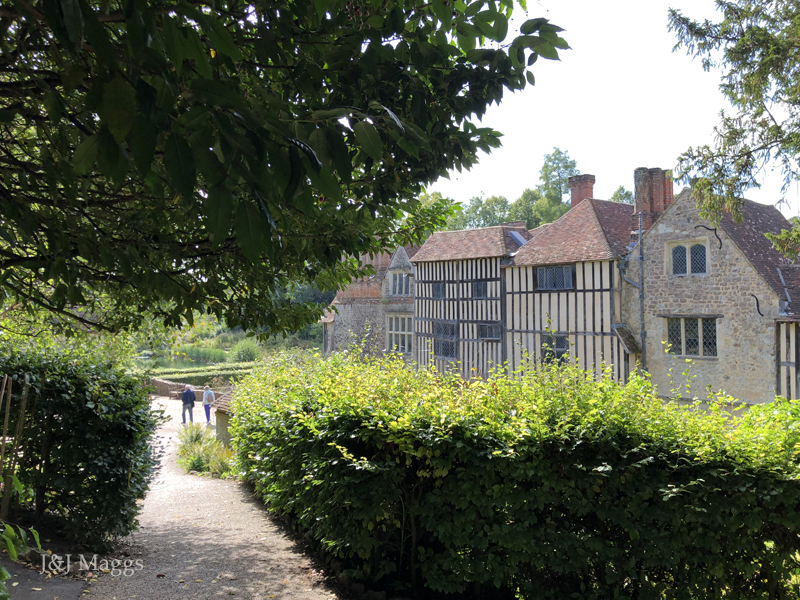
Coming upon Ightham Mote for the first time feels like discovering a secret. Visitors travel down into a secluded Kent valley and there it is, seemingly hidden away, untouched by the centuries of building of odd nooks and ancient stonework, mirrored in water, Ightham Mote has been called "the most complete small Medieval manor house in Kent". It's a magical location, tranquil and beautiful. This isn't a place of grand avenues and imposing vistas; though it was built to impress, Ightham Mote now seems understated, with a quirky charm all of its own. (The National Trust Guide to Ightham Mote)
~ ~ ~ ~ ~ ~ ~ ~ ~ ~ ~ ~ ~ ~ ~ ~ ~ ~ ~ ~ ~ ~ ~ ~ ~ ~ ~ ~ ~ ~ ~ ~ ~ ~ ~ ~ ~ ~ ~ ~
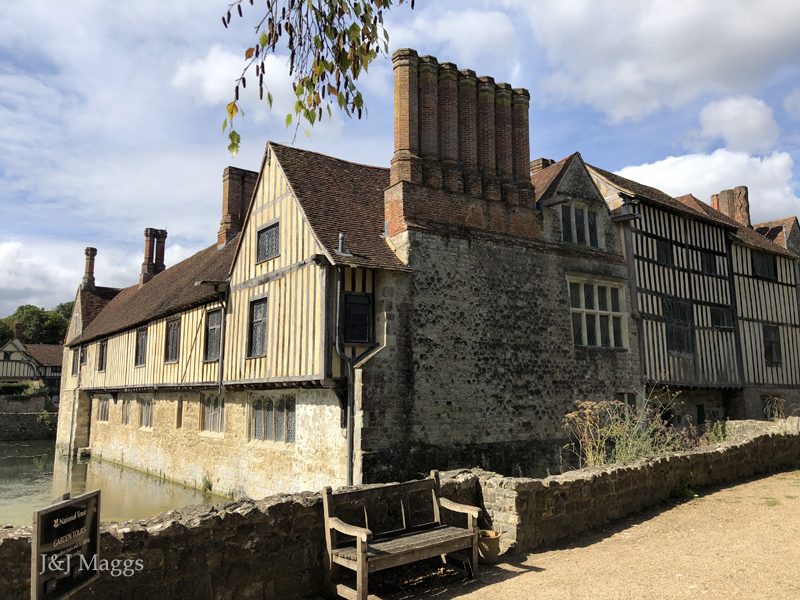
Outside view of the 700 year old manor house, surrounded by a moat, as it has been for its entire life
~ ~ ~ ~ ~ ~ ~ ~ ~ ~ ~ ~ ~ ~ ~ ~ ~ ~ ~ ~ ~ ~ ~ ~ ~ ~ ~ ~ ~ ~ ~ ~ ~ ~ ~ ~ ~ ~ ~ ~

Another view of the moat
~ ~ ~ ~ ~ ~ ~ ~ ~ ~ ~ ~ ~ ~ ~ ~ ~ ~ ~ ~ ~ ~ ~ ~ ~ ~ ~ ~ ~ ~ ~ ~ ~ ~ ~ ~ ~ ~ ~ ~
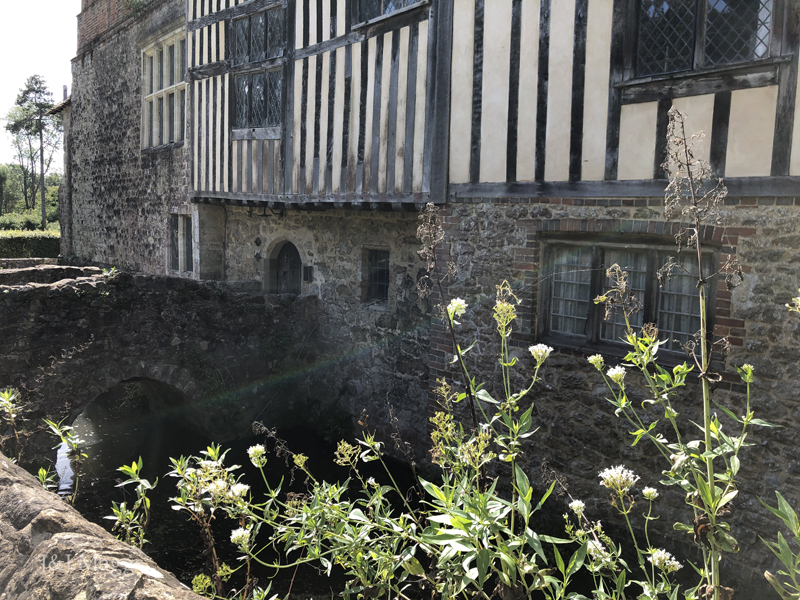
~ ~ ~ ~ ~ ~ ~ ~ ~ ~ ~ ~ ~ ~ ~ ~ ~ ~ ~ ~ ~ ~ ~ ~ ~ ~ ~ ~ ~ ~ ~ ~ ~ ~ ~ ~ ~ ~ ~ ~
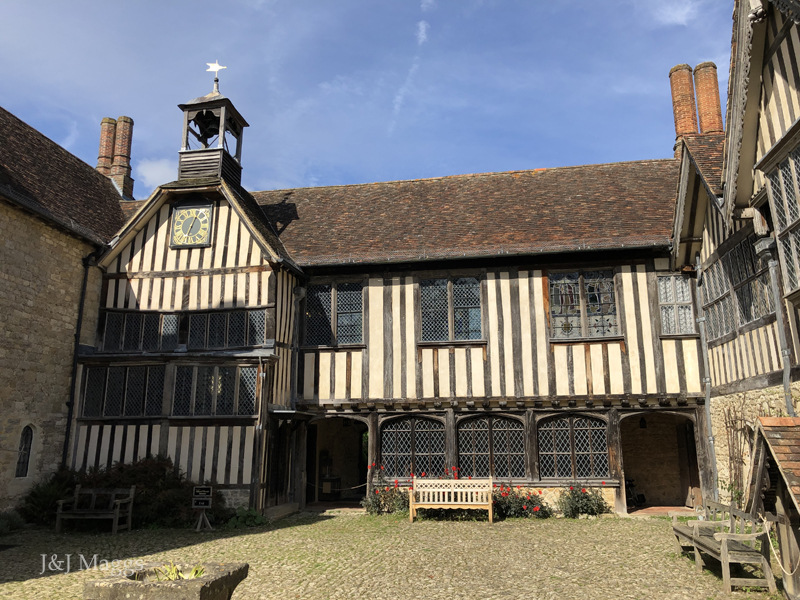
The inner courtyard
~ ~ ~ ~ ~ ~ ~ ~ ~ ~ ~ ~ ~ ~ ~ ~ ~ ~ ~ ~ ~ ~ ~ ~ ~ ~ ~ ~ ~ ~ ~ ~ ~ ~ ~ ~ ~ ~ ~ ~
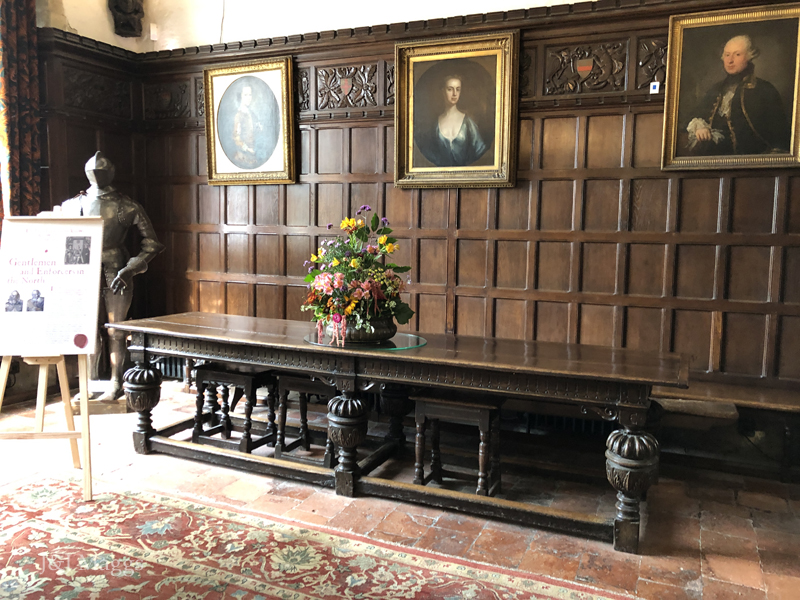
The Great Hall
~ ~ ~ ~ ~ ~ ~ ~ ~ ~ ~ ~ ~ ~ ~ ~ ~ ~ ~ ~ ~ ~ ~ ~ ~ ~ ~ ~ ~ ~ ~ ~ ~ ~ ~ ~ ~ ~ ~ ~
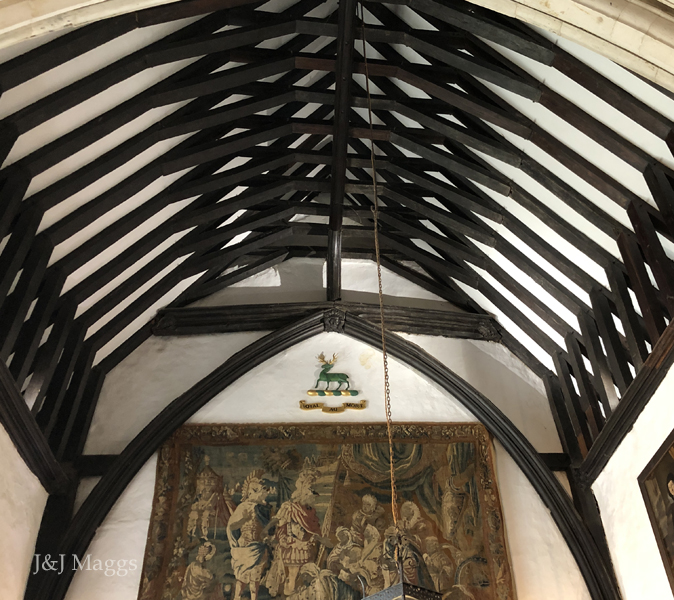
Ceiling of the Great Hall
~ ~ ~ ~ ~ ~ ~ ~ ~ ~ ~ ~ ~ ~ ~ ~ ~ ~ ~ ~ ~ ~ ~ ~ ~ ~ ~ ~ ~ ~ ~ ~ ~ ~ ~ ~ ~ ~ ~ ~
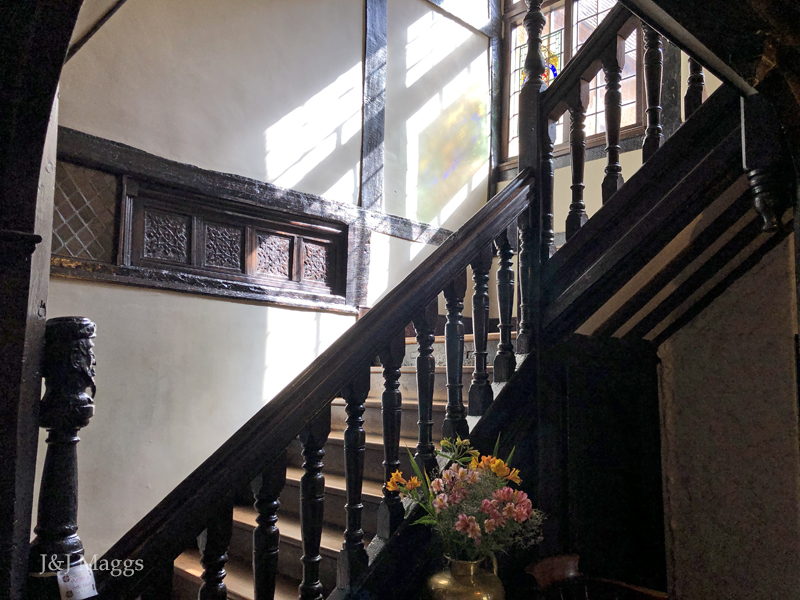
Grand staircase
~ ~ ~ ~ ~ ~ ~ ~ ~ ~ ~ ~ ~ ~ ~ ~ ~ ~ ~ ~ ~ ~ ~ ~ ~ ~ ~ ~ ~ ~ ~ ~ ~ ~ ~ ~ ~ ~ ~ ~
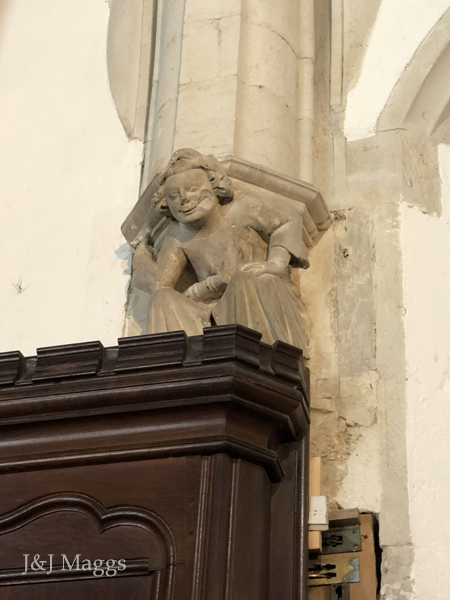
~ ~ ~ ~ ~ ~ ~ ~ ~ ~ ~ ~ ~ ~ ~ ~ ~ ~ ~ ~ ~ ~ ~ ~ ~ ~ ~ ~ ~ ~ ~ ~ ~ ~ ~ ~ ~ ~ ~ ~
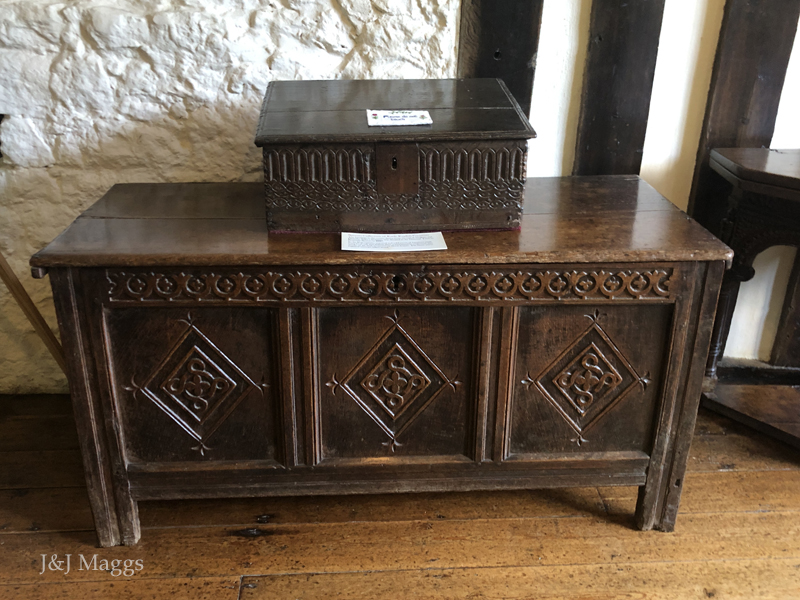
Much of the 17th century furniture in Ightham Mote was donated to the National Trust by famed collector Reginald Sneyers in 1987.
~ ~ ~ ~ ~ ~ ~ ~ ~ ~ ~ ~ ~ ~ ~ ~ ~ ~ ~ ~ ~ ~ ~ ~ ~ ~ ~ ~ ~ ~ ~ ~ ~ ~ ~ ~ ~ ~ ~ ~

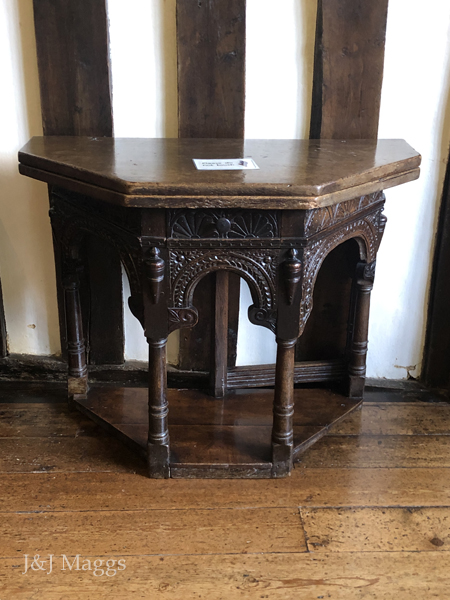
~ ~ ~ ~ ~ ~ ~ ~ ~ ~ ~ ~ ~ ~ ~ ~ ~ ~ ~ ~ ~ ~ ~ ~ ~ ~ ~ ~ ~ ~ ~ ~ ~ ~ ~ ~ ~ ~ ~ ~
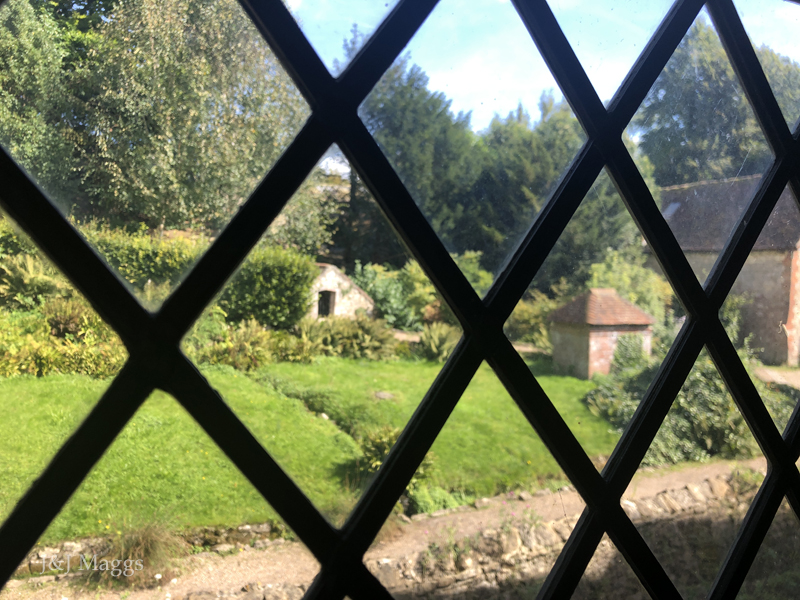
The lush grounds, viewed through a leaded glass window
~ ~ ~ ~ ~ ~ ~ ~ ~ ~ ~ ~ ~ ~ ~ ~ ~ ~ ~ ~ ~ ~ ~ ~ ~ ~ ~ ~ ~ ~ ~ ~ ~ ~ ~ ~ ~ ~ ~ ~
Because of our late arrival, it was particularly difficult to pull ourselves away from Ightham Mote,
but Knole was less than ten miles away and we couldn't imagine being this close and not stopping for a visit, however brief.
27. Knole House
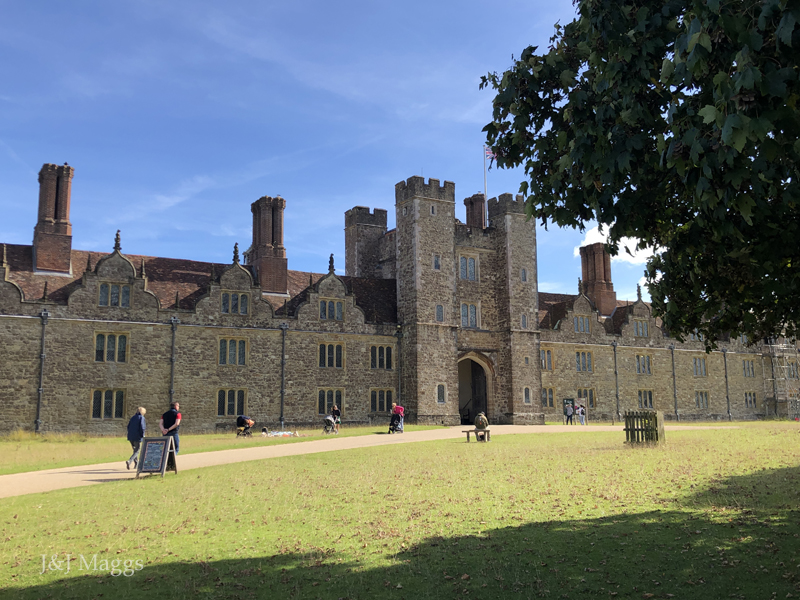
The Knole estate has been mentioned in documents as early as the late 1200s, and the existing buildings were renovated and expanded in the middle of the 15th century by Thomas Bourcier, then Archbishop of Canterbury. It was occupied by the next four archbishops, the last of whom was Thomas Cranmer. In 1538 Henry VIII, who favored Knole, forced Cranmer to surrender it to the crown. In the 17th century, Thomas Sackville, 1st Earl of Dorset created the Renaissance palace that Knole remains today. Among its many claims to excellence, is its vast collection of royal furniture, moved from the royal palace to Knole when it was no longer fashionable. Much of it remains on display in the long gallery.
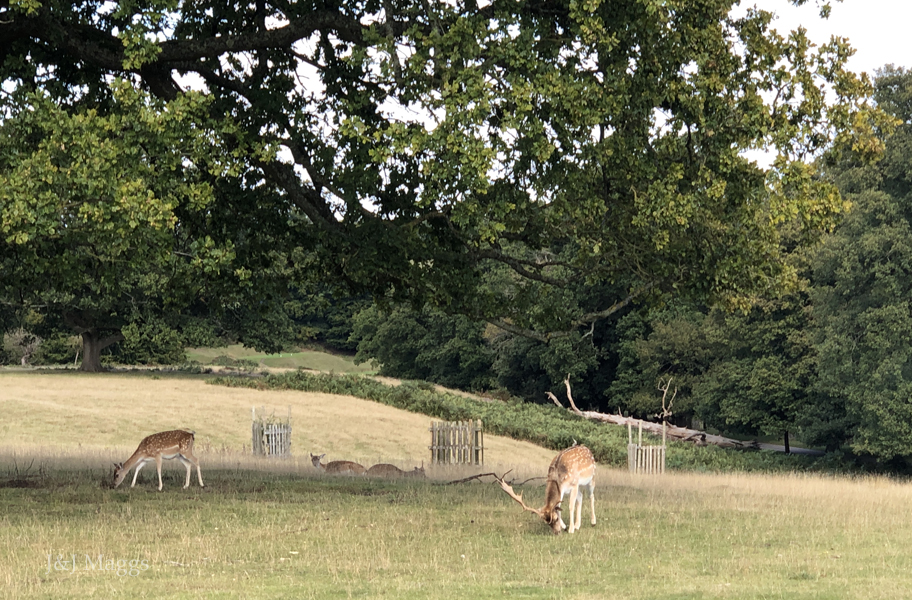
The medieval deer park survives to this day, its occupants considerably safer than in Tudor times.

The inner courtyard and the entrance to the manor house
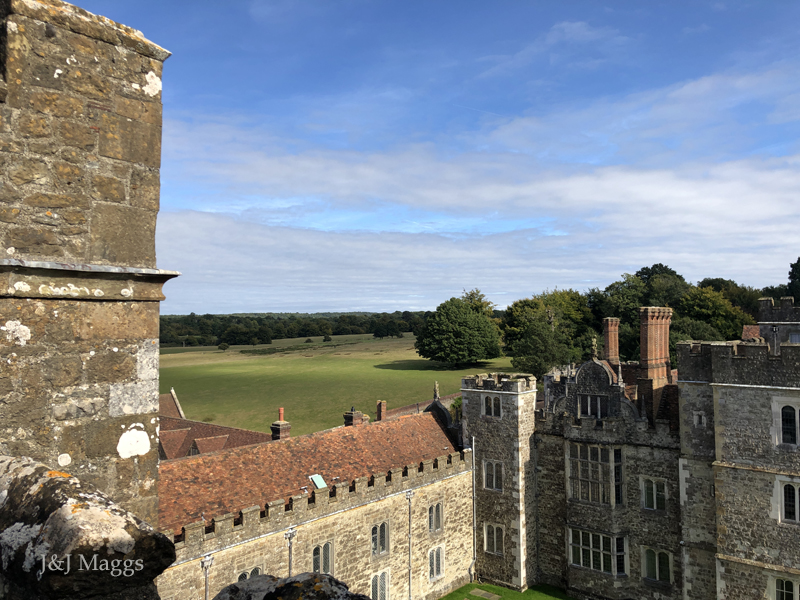
View of the Kent countryside from one of the towers
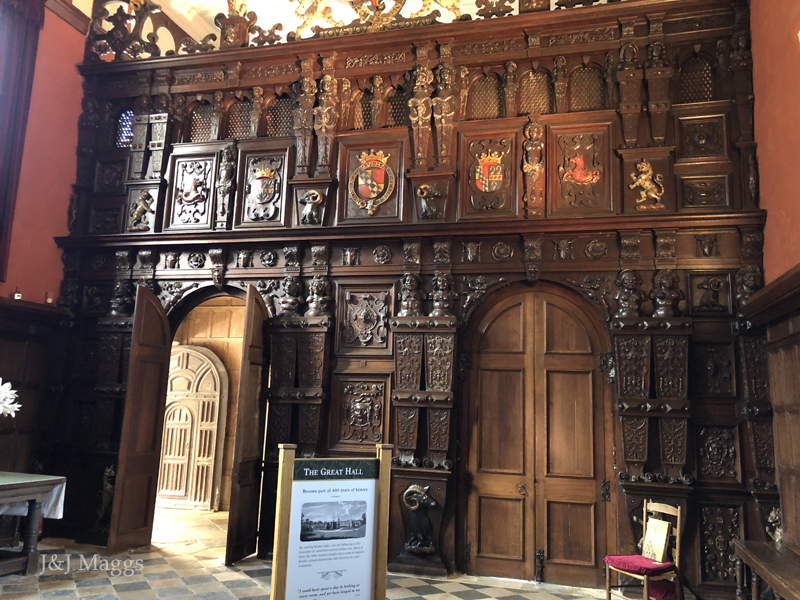
This spectacular carved oak screen was created during Thomas Sackville's expansion of Knole between 1605 and 1608
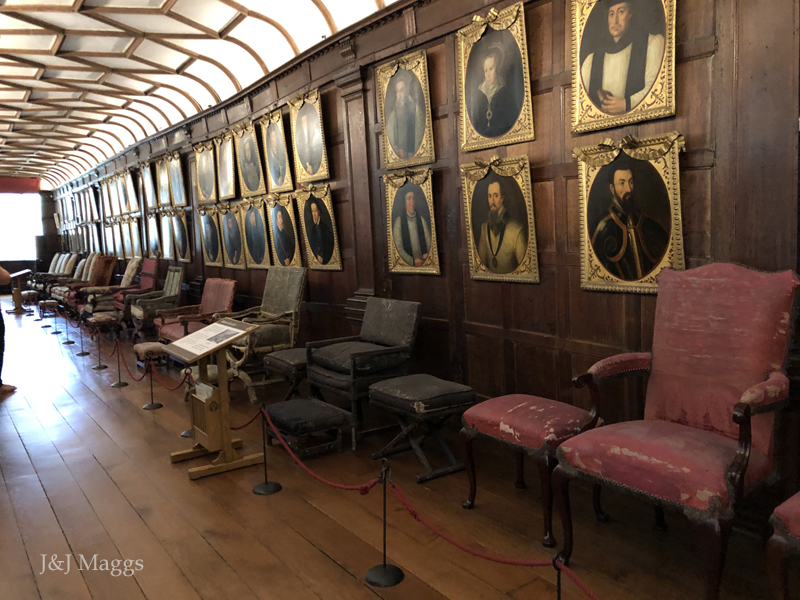
The long gallery, a who's who of important Tudor figures
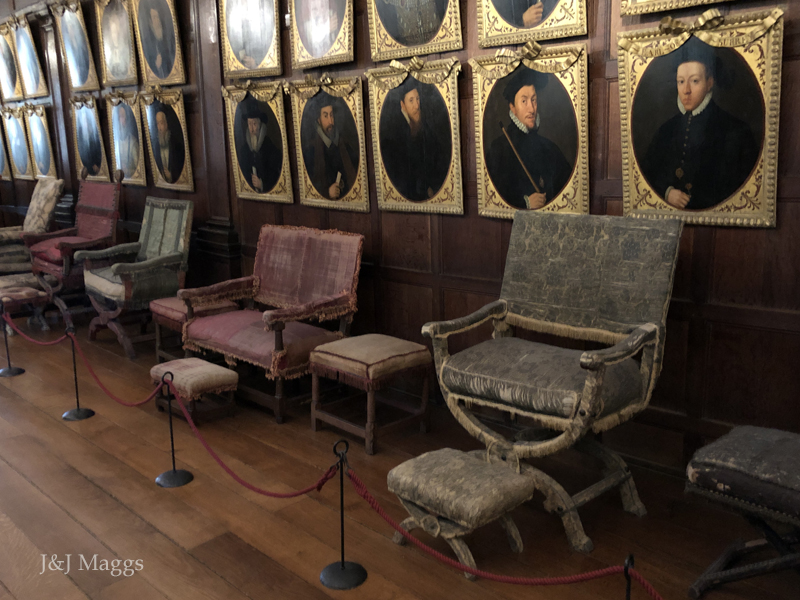
and a textbook of upholstered Tudor furniture
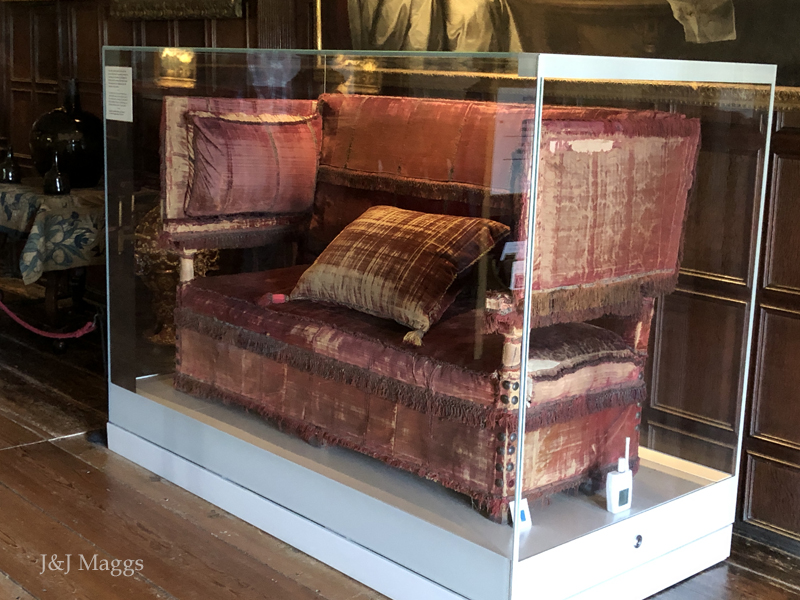
The Knole sofa
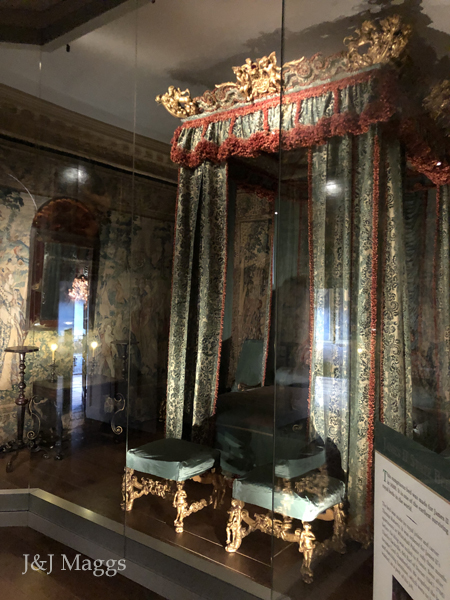
The state bed of James II, ordered for his Whitehall apartments three months before the young king was exiled to France.
The bed, obsolete in the absence of its intended, was given to Charles Sackville as a perk of his job.
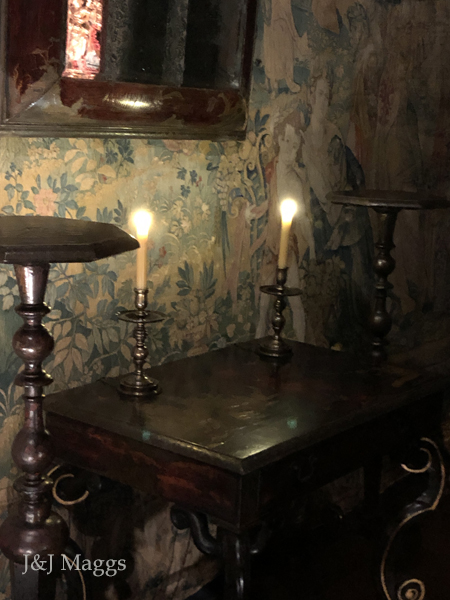
We left Knole and drove to Hickstead, where, after a delicious meal at The Duke of York in nearby Sayers Common, retired for the day.
28. Weald & Downland Living Museum
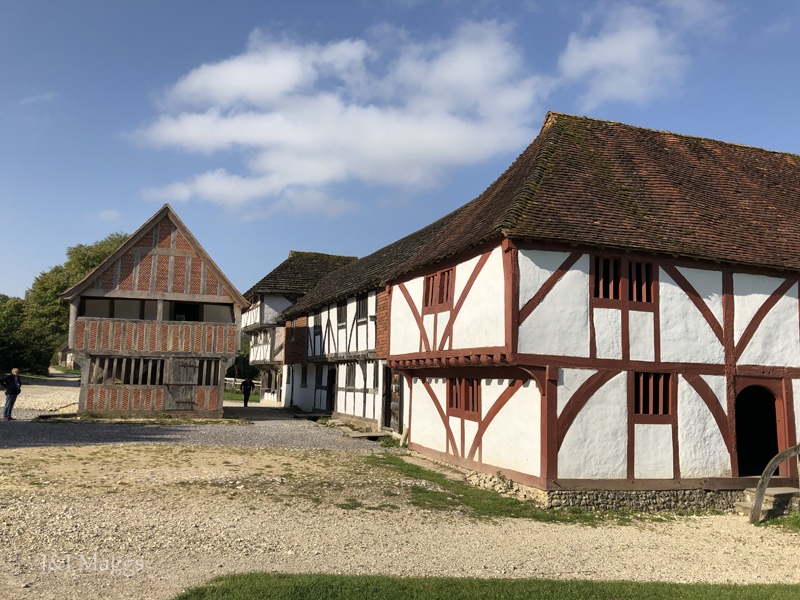
This extraordinary museum was founded in 1970 by a group of individuals with a shared interest in preserving ancient buildings in the South East of England from demolition by providing a space to which they could be transported and reconstructed as they might have been when first erected. The success of the enterprise is reflected in the broad appeal of the museum and in the numerous awards it has garnered during its relatively short life. The forty acre park feels like a large agriculturally-based village, connected by dirt roads and footpaths. The site covers forty acres, much of which is devoted to farming. The houses are open to visitors, and many are staffed with artisans continuing the trades practiced by the original owners.

North Cray House, built in the 15th century, dismantled in 1965
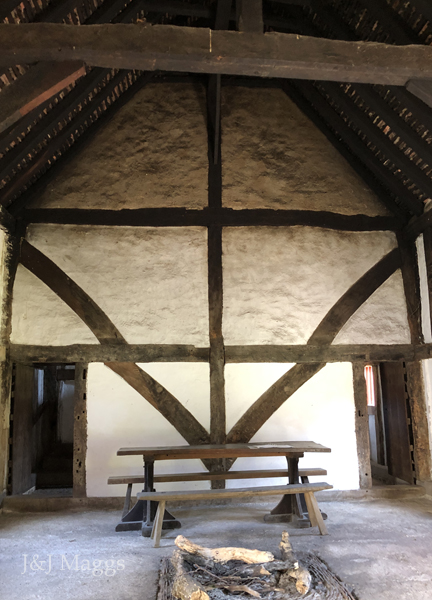
Inside North Cray house
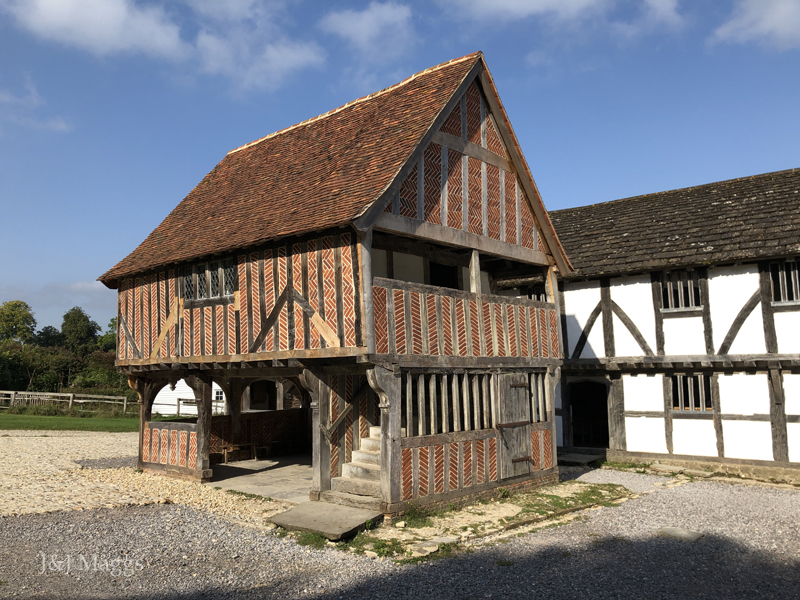
Titchfield Market Hall, built ca. 1619

The upper floor, once the town meeting hall
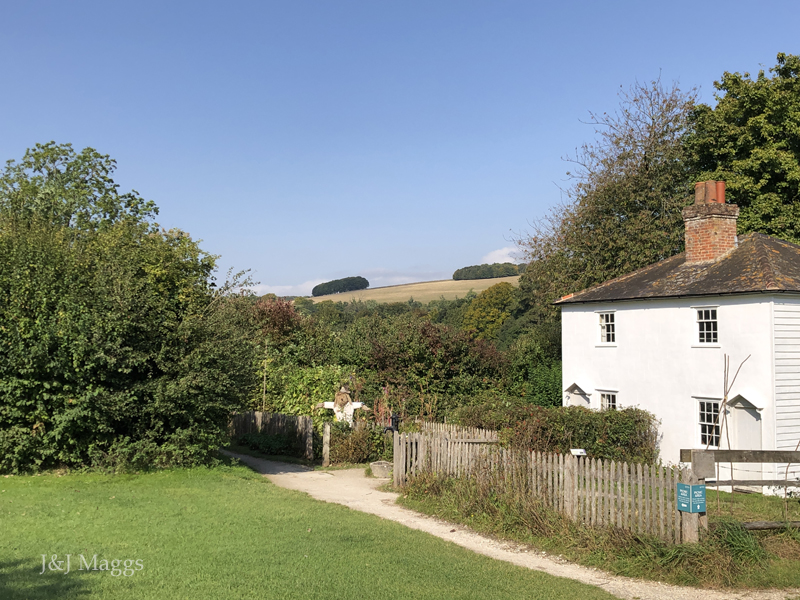
Whittaker's cottages, built in the mid 1800s
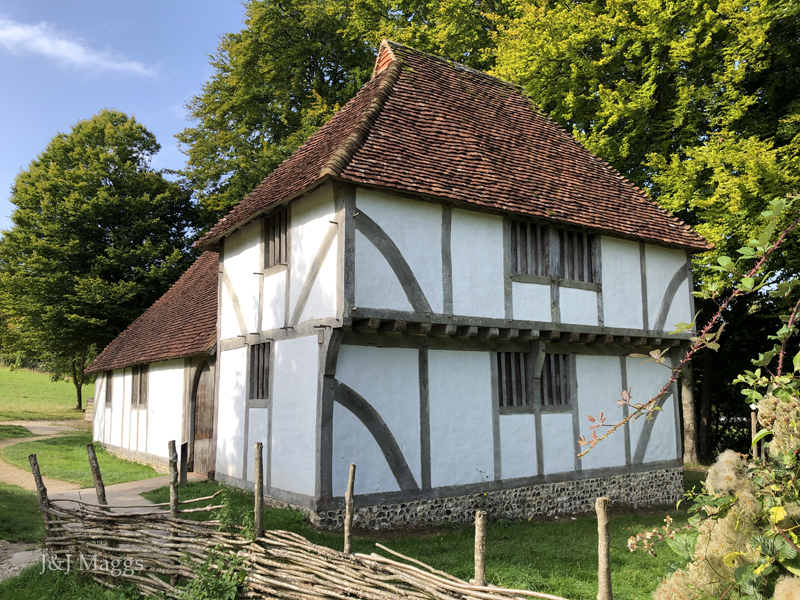
Horsham shop, dating from the late 1400s

A garden in mid-September
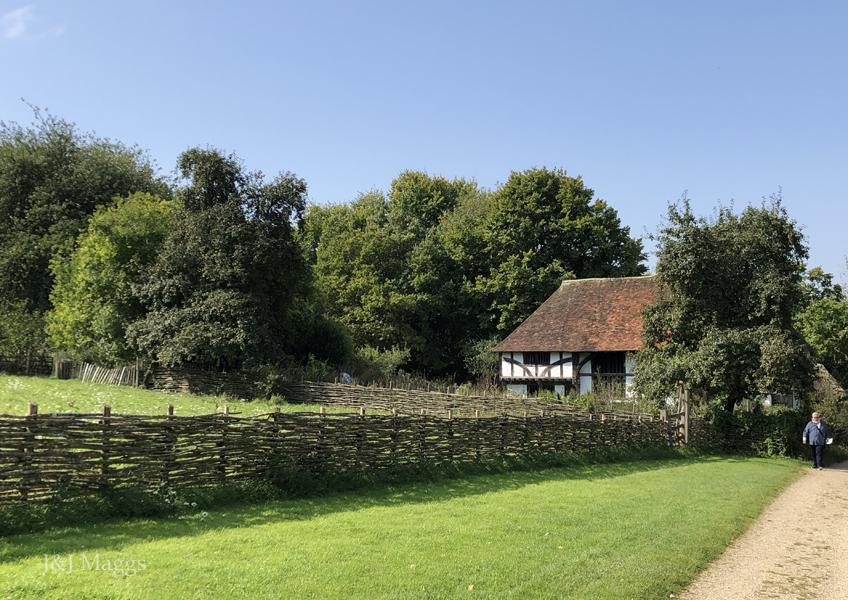
One of many fenced-in meadows
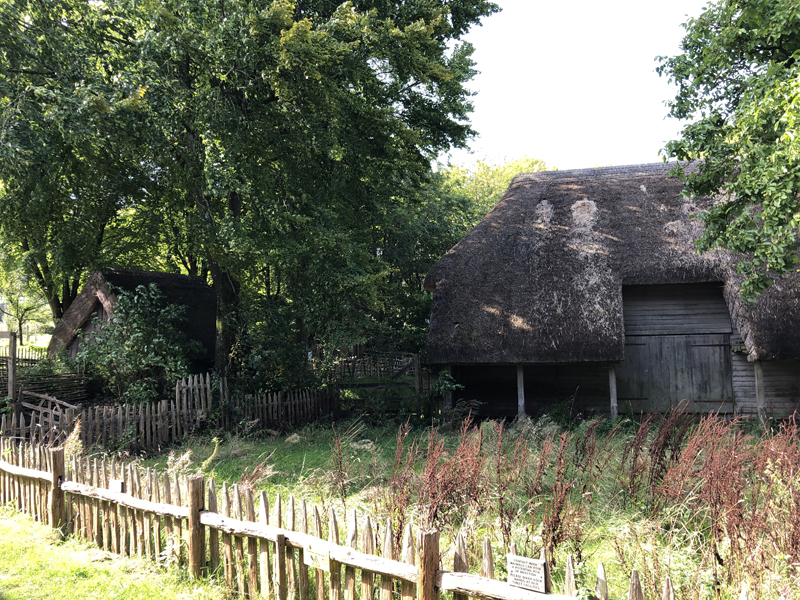
A perfect setting for this early barn

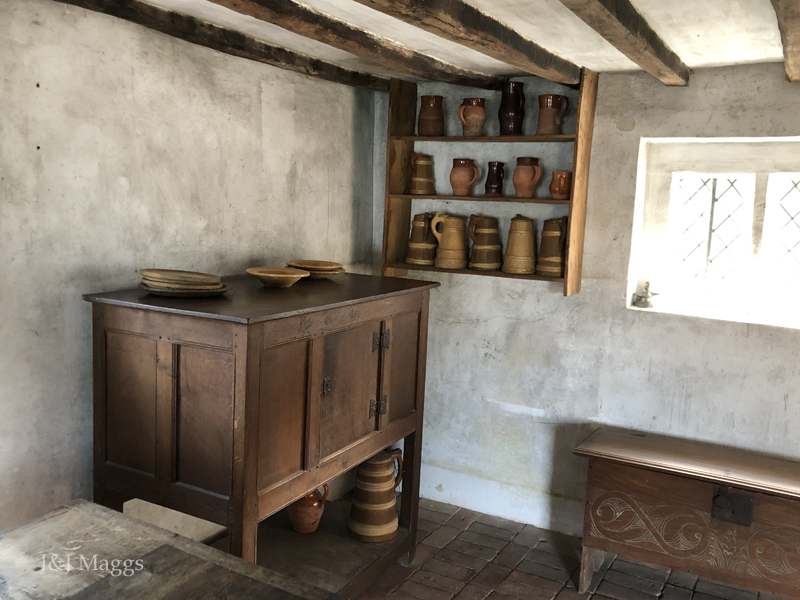
Since most of the buildings here were derelict and vacant, they came without furnishings.
Most of the furniture in the museum was made by Master Carpenter Roger Champion.
The guiding principles of Champion's work are summarized in his statement on the museum's website.
“The aim is to limit the evidence of modern machinery techniques. For example, no circular saw mark, no planer marks, instead plane by hand, cut moulding with a serrated stook, not a router. This all takes time. All overtime is voluntary! There is no attempt at ‘distressing’ furniture (or buildings for that matter), aging takes place naturally. All furniture has started off in the workshop with two coats of 50/50 raw linseed oil and turpentine. Additional ‘colour’ are soot stained from open fires, polishing by bums on seats, access to the elements through open windows and the existing basic environment at the Museum.”
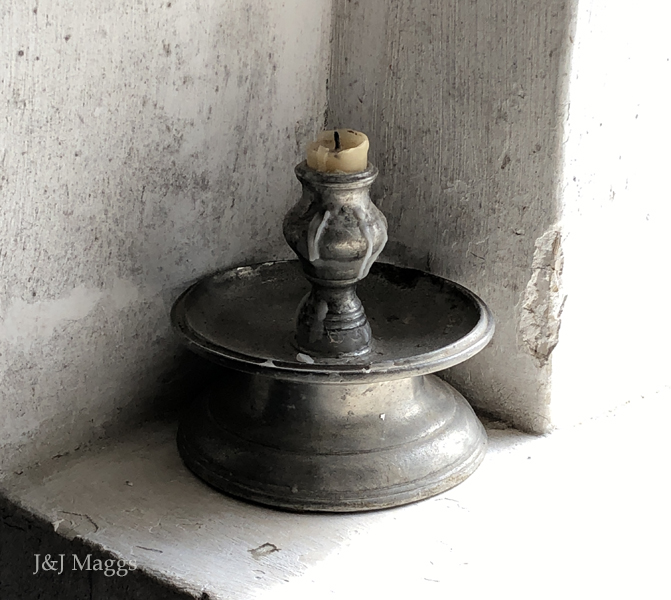
It was a short drive to Heathrow, where we returned our rental car and boarded the Underground to our hotel in Kensington.
It was Wednesday, and we were flying home on Friday, but our National Trust adventure had one more stop, which we would visit in the morning.
29. Eastbury Manor House
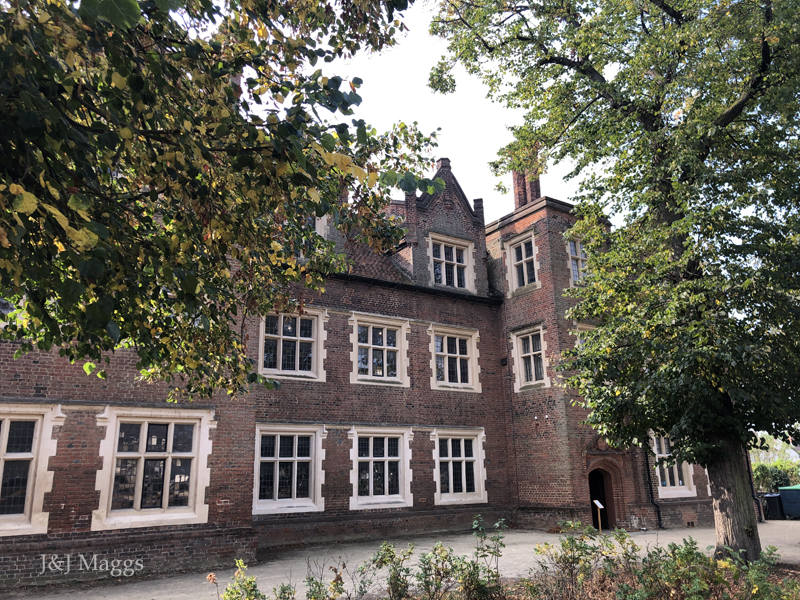
After a simple breakfast in the hotel, we took the District Line to Upney, a trip of just over an hour, to visit Eastbury Manor House. This Tudor country house, built in the 1570's by a wealthy London merchant, is notable for its glass windows, brickwork, and very tall chimneys. It was saved from demolition in the early decades of the 20th century and is interesting in its architectural details, particularly its roof, its ancient oak spiral staircase, and two large examples of wall art from the Tudor period. In its 426-page Guide, the Trust dedicates only one two sentence paragraph to the house, which seems a bit unfair, considering the significance of this property.
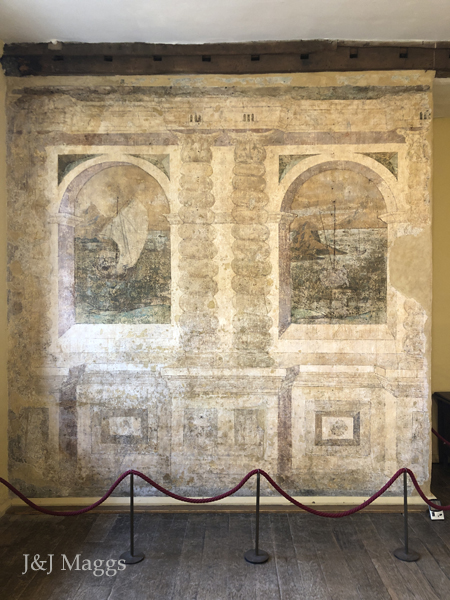
The Painted Chamber, "a rare surviving example of early 17th century wall paintings at the heart of the house." (National Trust)
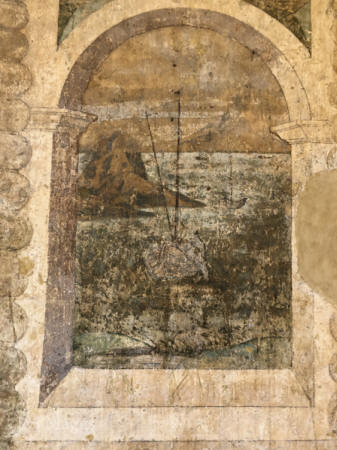
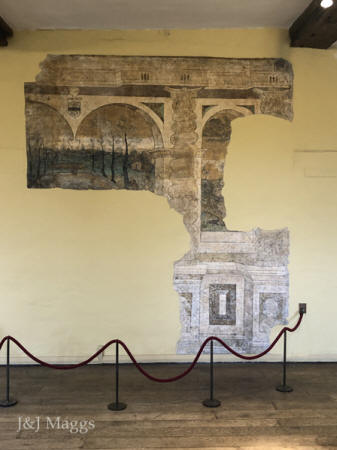

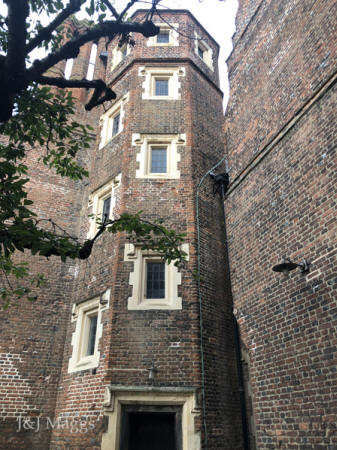
The original spiral oak staircase and its turret
~ ~ ~ ~ ~ ~ ~ ~ ~ ~ ~ ~ ~ ~ ~ ~ ~ ~ ~ ~ ~ ~ ~ ~ ~ ~ ~ ~ ~ ~ ~ ~ ~ ~ ~ ~ ~ ~ ~ ~
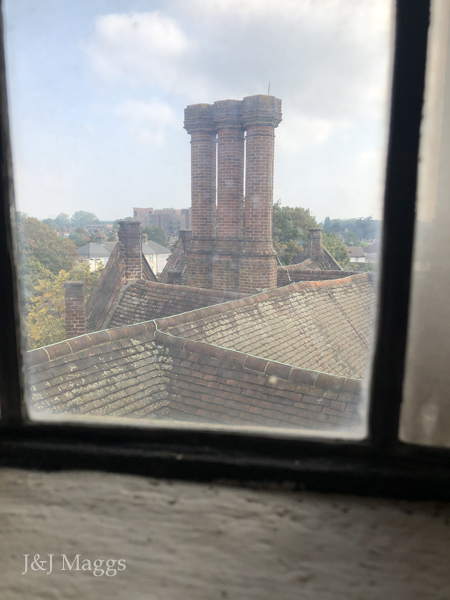
The tall chimneys, viewed from the turret
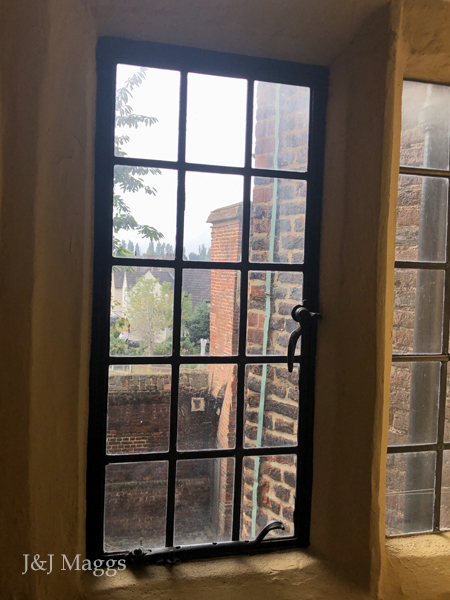
~ ~ ~ ~ ~ ~ ~ ~ ~ ~ ~ ~ ~ ~ ~ ~ ~ ~ ~ ~ ~ ~ ~ ~ ~ ~ ~ ~ ~ ~ ~ ~ ~ ~ ~ ~ ~ ~ ~ ~
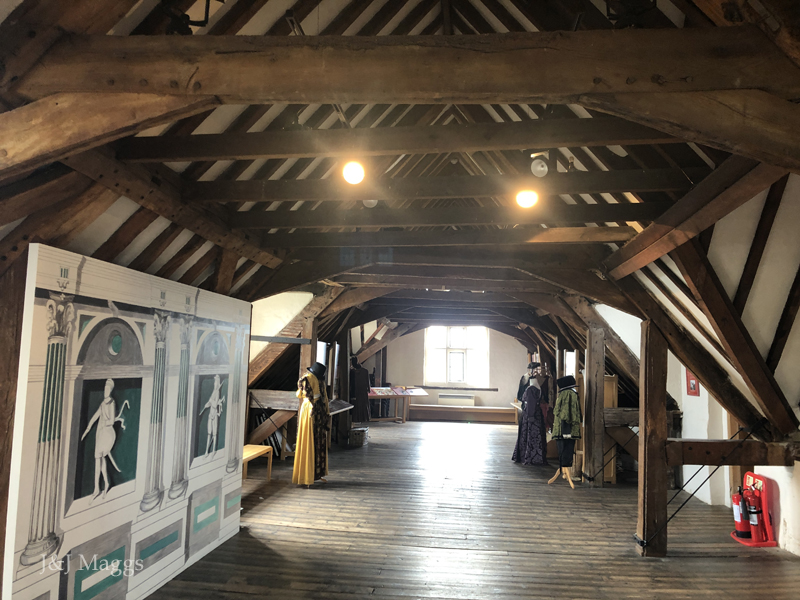
Exhibition space upstairs
~ ~ ~ ~ ~ ~ ~ ~ ~ ~ ~ ~ ~ ~ ~ ~ ~ ~ ~ ~ ~ ~ ~ ~ ~ ~ ~ ~ ~ ~ ~ ~ ~ ~ ~ ~ ~ ~ ~ ~
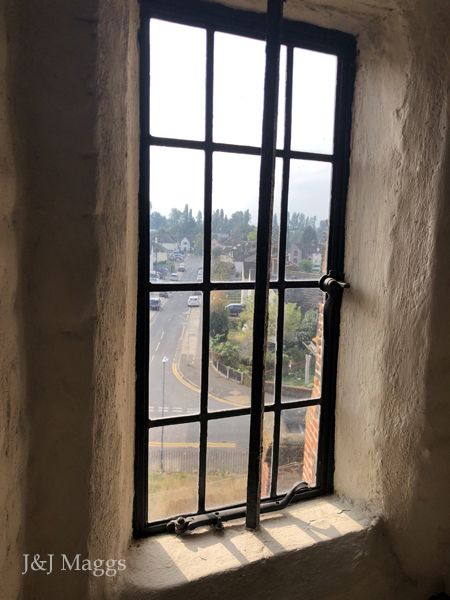
The busy streets below
~ ~ ~ ~ ~ ~ ~ ~ ~ ~ ~ ~ ~ ~ ~ ~ ~ ~ ~ ~ ~ ~ ~ ~ ~ ~ ~ ~ ~ ~ ~ ~ ~ ~ ~ ~ ~ ~ ~ ~
Our National Trust year is behind us. Our membership in The Royal Oak Foundation has taken us to 29 important historic buildings and places in England. We've feasted on architecture, furniture, paintings, and the tales of those who lived in these homes centuries before us. We hope you've enjoyed this highly personal look at English history, and we invite you to revisit it occasionally.
~ ~ ~ ~ ~ ~ ~ ~ ~ ~ ~ ~ ~ ~ ~ ~ ~ ~ ~ ~ ~ ~ ~ ~ ~ ~ ~ ~ ~ ~ ~ ~ ~ ~ ~ ~ ~ ~ ~ ~
Click HERE to visit the J&J Maggs Antiques home page.